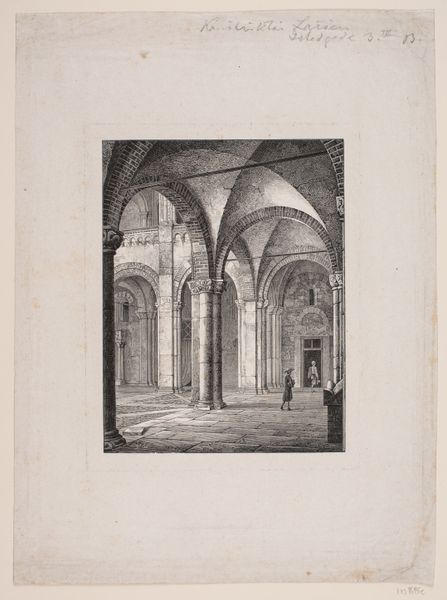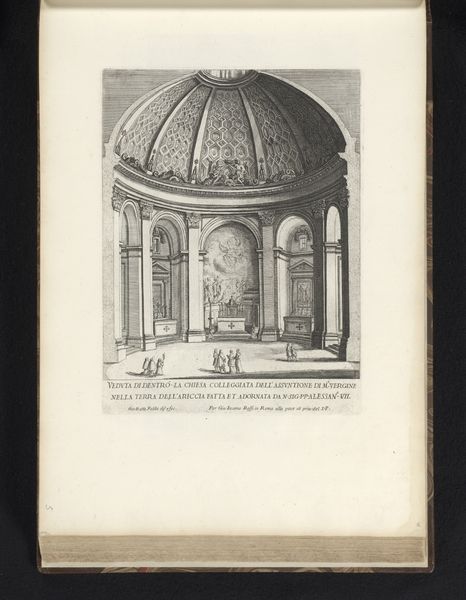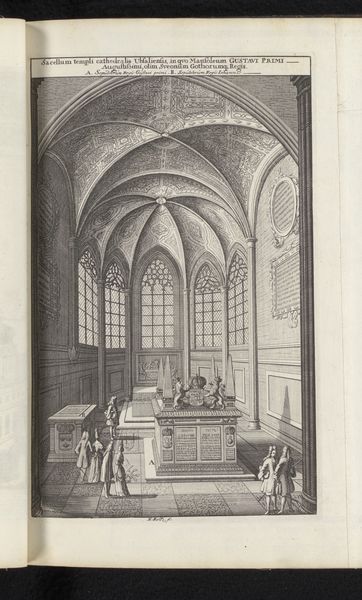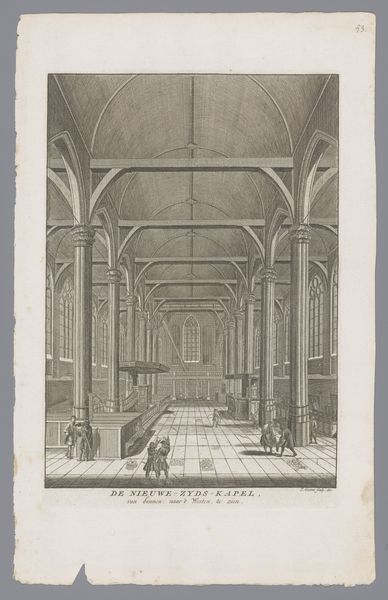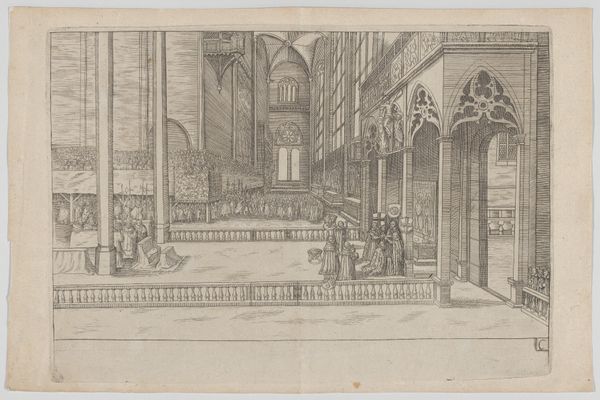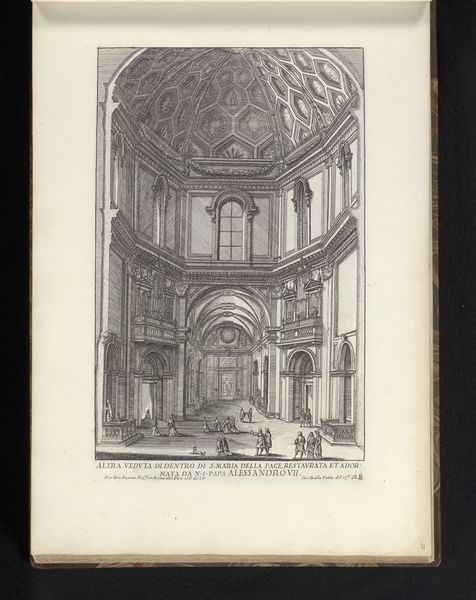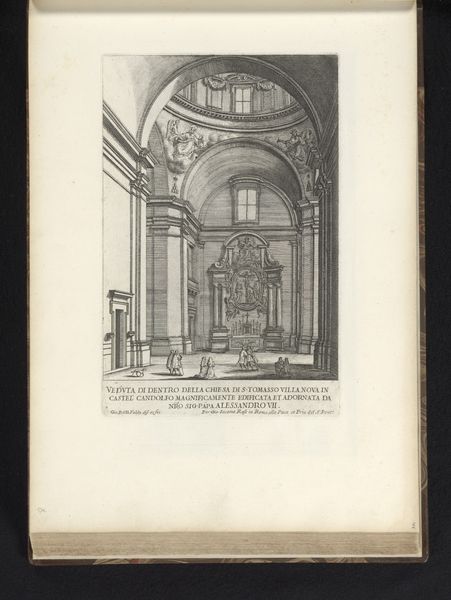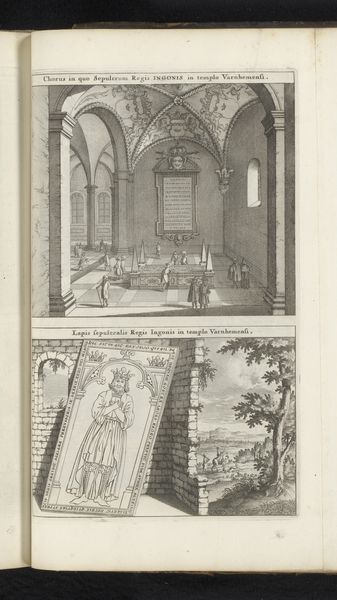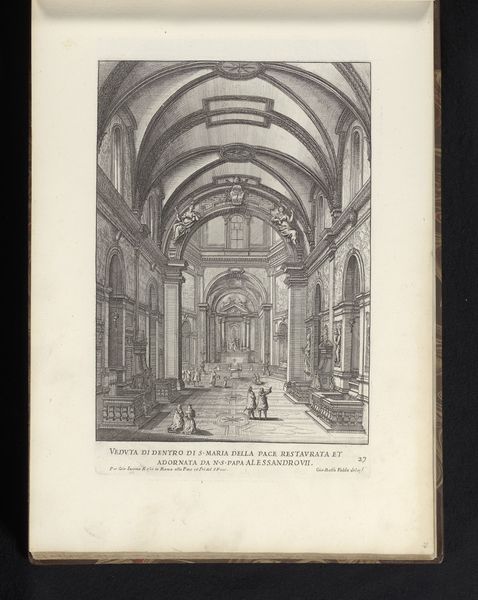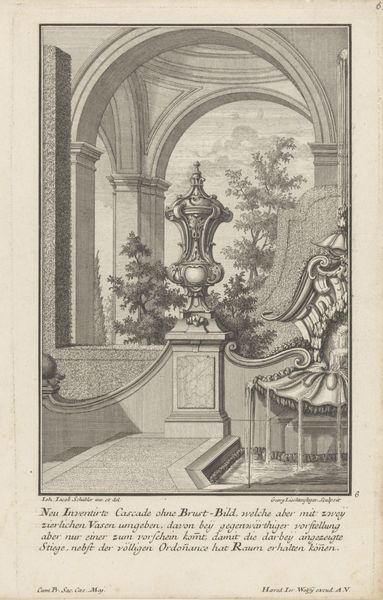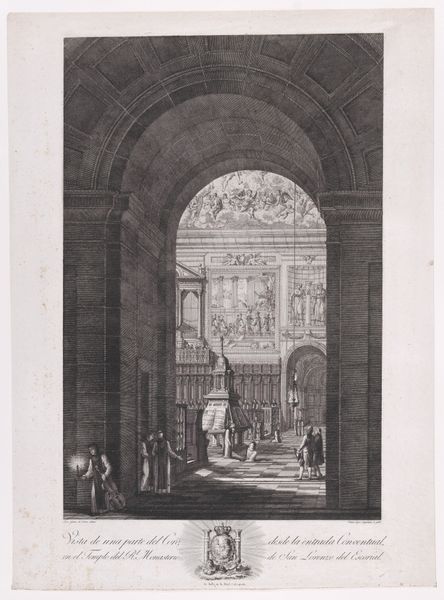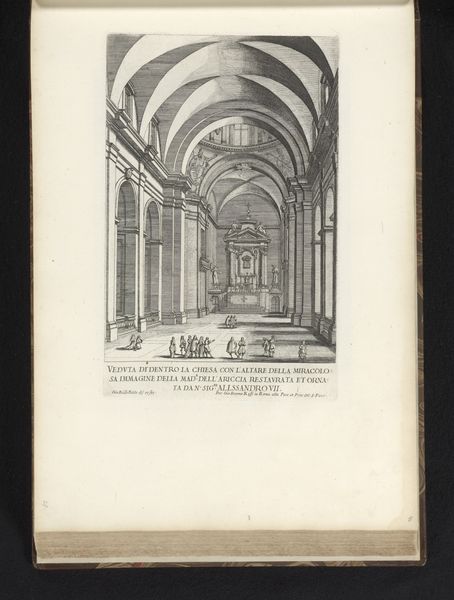
drawing, print, ink, engraving
#
drawing
#
baroque
#
pen drawing
# print
#
pencil sketch
#
ink
#
line
#
cityscape
#
history-painting
#
engraving
Dimensions: height 264 mm, width 170 mm
Copyright: Rijks Museum: Open Domain
Curator: What an intensely detailed space, almost claustrophobic despite its size. There's a density to the image that evokes a sense of foreboding. Editor: Indeed. The work before us, an engraving from 1695, depicts the "Grafmonument van Katarina Jagiellonica in de kathedraal van Uppsala"—the burial monument of Katarina Jagiellonica, a Polish princess who became Queen of Sweden. Curator: The line work is impressive. I’m immediately drawn to the vaulting of the cathedral, which dominates the composition and seems to press down on the figures below. Is that a canopy swagged across the top, like stage curtains? What symbols should we be considering here? Editor: The canopy might serve as a symbol of royalty but also of the theatricality inherent in Baroque memorial art. It’s very consciously staged. Considering the queen, it's important to recall the socio-political complexities of the time: a Catholic queen in a Protestant country. Her very presence must have been rich with symbolic weight. This engraving performs the function of displaying dynastic power, placing her within the Swedish narrative. Curator: Note, too, how the engraver, Erik Reitz, has presented a hierarchy of figures: mourners closest, with men and dogs behind as guardians perhaps, drawing parallels to imagery from antiquity and older iconic forms around death, transition, and memory. Is this a symbolic assertion of authority, even in death? Editor: Absolutely, particularly considering this piece originated decades after her actual death, so we should be aware of the moment it entered the public imagination as a politically charged representation of power and legacy. The attention to architectural detail lends an air of legitimacy. These aren't just any ruins, this is Uppsala Cathedral itself! The artist uses it to amplify the Queen’s importance. Curator: And what are we meant to take away from its current state as a sort of architectural blueprint, almost cold in the clarity of its lines, but not so much in the effect that its details, forms, and careful symbolic arrangements ultimately evoke? The tomb as stage; as a symbolic testament in visual terms? Editor: Perhaps the rendering itself carries its own message. An engraving, reproducible, circulated—it's about ensuring the story of Katarina, and the power she represented, endured throughout Swedish history. This image acts as a sort of historical document, embedding her story into the national identity. Curator: Interesting, indeed! An insightful commentary about history, art, memory, and the power of symbols to outlive their moment. Editor: And to continuously reshape the narrative of a queen long after her reign. Thank you for the insight!
Comments
No comments
Be the first to comment and join the conversation on the ultimate creative platform.
